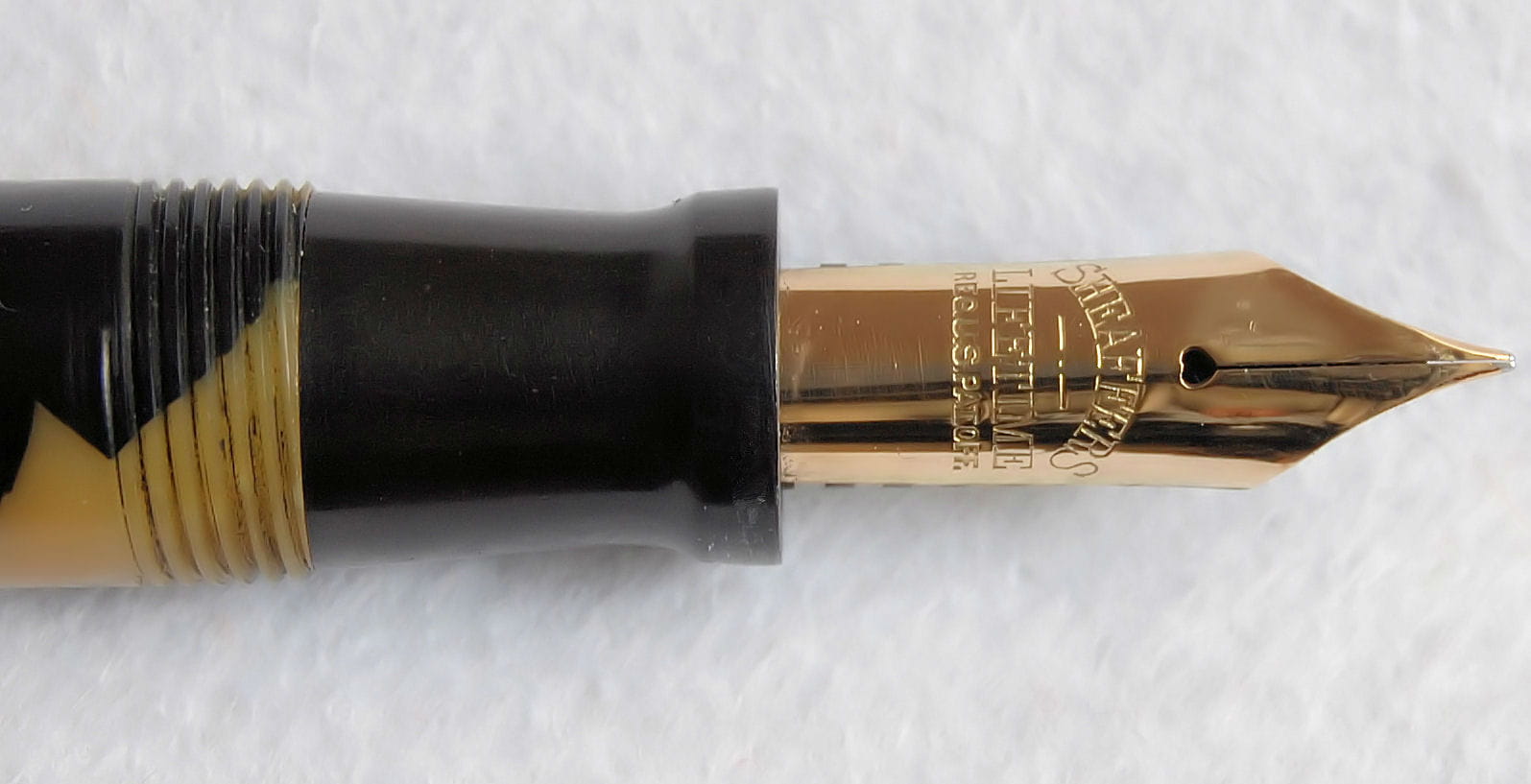Being fully aware of the (most probable?) lack of a definite answer, I decided to pick your brains anyway. I did some digging looking for the answer and I have found myself in the starting point ... But maybe I just wasn't looking carefully enough ... Ad rem:
As the topic and its description state: Is there any P R O P E R way of naming different sizes of Flat-tops? I mean I couldn't find any Sheaffer's printed indication but I can look up only one catalogue from the roaring 20's ... No info of this type in the adverts I saw.
From what I can see the names in circulation are as follows:
The biggest in size pens are called: OS/Oversize, Large, Standard size (in regular and slender variety), Senior (sic!), Full Length
The other ones: Junior, Short Length, Long-Slender ...
Obviously there are nib-imprinted models like 5-30, 3-25, 46 special, 22 student and the like - here naming is easier, although sometimes tricky (vide different sizes of pens with 8 nib, etc.).
The question is simple and precise: Is there any, for some reason better, way of naming the biggest model - when refering to their size (that is: length and girths). Or should I just accept all the names I mentioned above to be ... natural attempts to describe the realm somehow for the sake of communication?
I have a 1923 catalogue in front of me. Pens are marked with codes: digits and letters. Digits for the nib type. Letters for ... different things, I guess
In Sheaffer Regular Line, compering size, there are 3 types of pen:
A. The biggest, with a letter code referring to a presence of a clip (?) - letter C
B. Smaller ones, marked SC (Short or Student (?), with a clip or SR (Short or Student (?), Ring-top)
C. Finally the smallest one: marked M (I guess, we would call it Midi today? Or it should be Mini/SeMi/Medium?)
In LifeTime line the clip/no-clip labels seem to be the same. Out of three of the ones in Regular Line there are two sizes depicted: A and B. Smaller one has "S" in the code. New letter is used (T - ... for having LifeTime warranty?) but doesn't look like it has anything to do with the size ...
All help and hints welcome. If I missed some self-evident info please direct me to it. Also - I maybe mistaken with my "deciphering" pen codes. Please correct me if it's needed.
TIA for all the answers,
Regards,
Mac
EDIT: In the document with Sheaffer's Giftie sets from circa 1922 - Regular Length pen - 5 inches, Midget pen - 3,75 inches. Midget size - nice
Edited by MacKozinsky, 01 July 2012 - 03:46 PM.



















